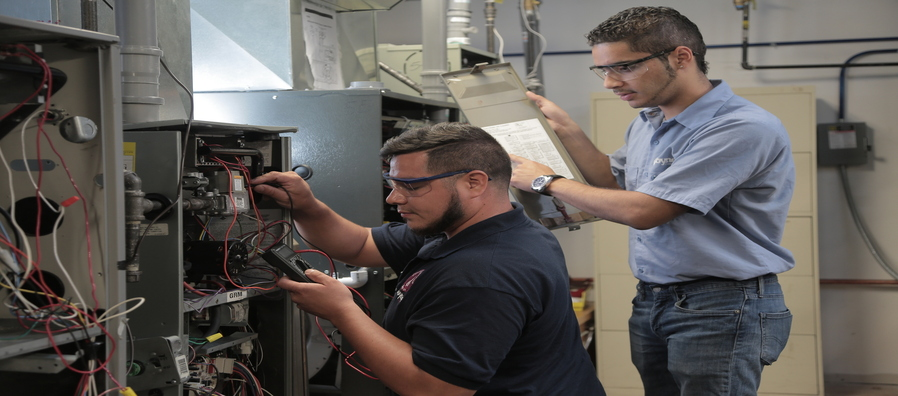If it’s 90 degrees outside and humid, you undoubtedly look forward to being nice and cool in your airconditioned home. What would you do if the air conditioning suddenly went out? Would you know how to do AC repair? Take a look at this AC repair and troubleshooting guide because it could show you how to fix AC problems—and save yourself a lot of money.
Before you begin your residential air conditioner repair, you should know what the HVAC system contains and how the parts work:
- Air return: the vents on the walls that allow air to return to be cooled
- Exhaust outlets: similar to a stove fan, it draws out hot or humid air through ductwork, allowing fresh air to move in
- Filter: the inexpensive cardboard-backed filter that traps contaminants like dust, pollen, and mold
- Ducts: a network of passageways that transports air in or out, conditioning it as it flows
- Compressor: the motor in the outdoor unit of a central AC system that circulates the refrigerant through the coils to cool your home
- Coils: the evaporator coil (inside the house) pulls heat through the air to cool it; the condenser coil (outside) regulates the temperature of the AC’s refrigerant
- Blower: activated by the thermostat, it engages the fan and blows the cooled air throughout the house
Common AC problems and what to do about them
Problem:
- High energy bills
- Limited airflow from vents
- Ice on refrigerant lines
- Poor cooling
- Water leaking from AC unit
Potential fix:
Check your air filter. Does it look clogged? Covered with dirt and dust? Replace the filter. Most are cardboard frames around foam or mesh that trap the debris. A good rule of thumb is to replace it every 30 to 90 days.
Problem:
- AC not working/won’t turn on
- Warm or hot air (not cool) coming from vents
Potential fix:
Make sure the thermostat is on “cool” and not “heat.” Also, check the electrical panel and look for tripped circuit breakers. If the one for AC is marked “off,” then try turning it “on.”
Problem:
- High energy bills
- Warm air coming through vents
- Inadequate cooling
- Lots of repairs
Potential fix:
Check your outdoor AC unit. There could be trapped debris or dirt. Try rinsing it with a hose on a gentle setting. If there’s a thick layer of dirt on the condenser, you should call a professional.
Problem:
- Icing on refrigerant lines
- Blower motor issues
- Damaged compressor
- Frozen evaporator coil
- Poor cooling
Potential fix:
Check the supply vents inside your house (even in the unused room) to see if they’re covered or blocked. Vents that are intentionally closed actually cause more problems and don’t save energy.
Maintenance tips that could help your AC work efficiently
- Check and replace air filters regularly.
- Keep the outdoor unit free of debris and dirt and remove anything that might block the airflow.
- Remove the condenser’s fan cage and use a wet or dry vac to clean away debris.
- Clean the fins and straighten bent ones with a butter knife; then brush and hose the inside.
- Clean the drain pan on the interior unit.
- Change the blower filter every six months.
- Dust the evaporator coil with a soft brush and spray it with no-rinse coil cleaner.
- Clean indoor registers and air ducts with a damp cloth and vacuum away dust.
- Listen for odd noises and see if there’s a loose bolt or debris caught in the outdoor unit.
- Turn off the humidifier’s water supply in the summer or turn it back to 35-45 percent.
- Give it a break when temperatures are not extreme and turn off the cooling; use the fans instead.
Just like with most things of value, if you properly maintain your HVAC system it’s probably going to work more efficiently and last longer. If you schedule regular checkups, you may be able to avoid costly air conditioner repair.
Interested in HVAC training programs in Chicago? Contact Coyne College and train to become an in-demand HVAC-R technician in less than a year.



